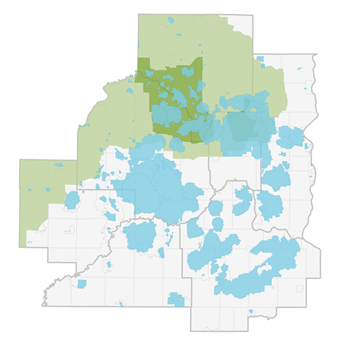1,500
square miles designated
for source water protection
Source water refers to drinking water from streams, rivers,
lakes, or underground aquifers that provide water for public water supplies and private wells. Source water protection is a community effort to prevent water pollution before it can reach our drinking water and become a public health problem.
Metro area drinking water sources
Drinking water source protection has been identified as a management goal for about 50% of the metro area. Of the region’s 186 communities, 163 contain a source water protection area. Water flowing through these areas is the source for over 90% of the region’s population (almost 3 million people).
Metro area land use
Since land use is so tied to drinking water quality, the state has found it important 1) to assess the likelihood that aquifers are subject to impacts from overlying land and water uses, and 2) to help entities manage these areas through wellhead protection plans.

Drinking water supply management area for public wells
Drinking water supply management area for Minneapolis and Saint Paul intakes on the Mississippi River (Priority Area A)
Drinking water supply management area for Minneapolis and Saint Paul intakes on the Mississippi River (Priority Area B)
Our role
The Met Council plans and makes strategic, efficient public investments to support our region’s high quality of life and economic competitiveness. We work to achieve goals that are too big for one community but possible to accomplish as a region.
Our goals include having sustainable and plentiful high-quality water resources for future economic growth, high-quality of life, and recreational activities.
More source water protection resources
The Minnesota Department of Health and Minnesota Pollution Control Agency also are working to protect source water resources. More information about these agencies' work: